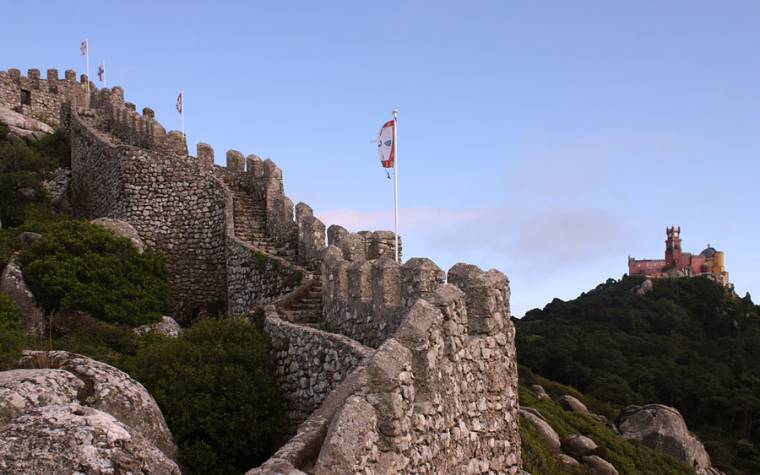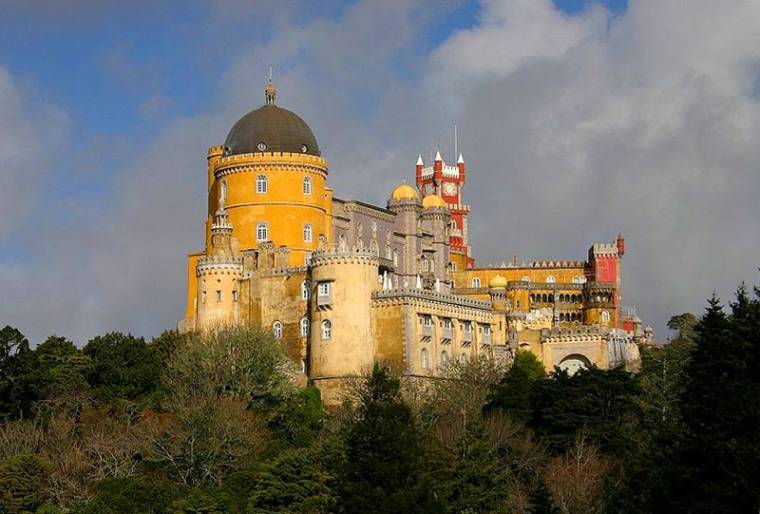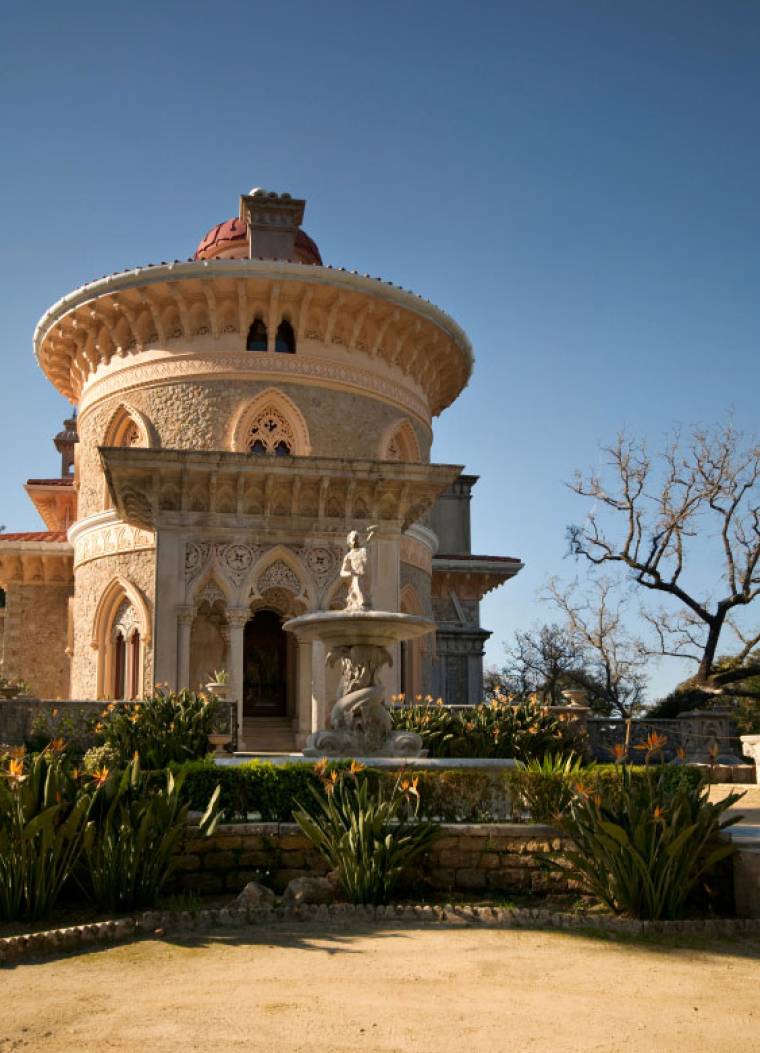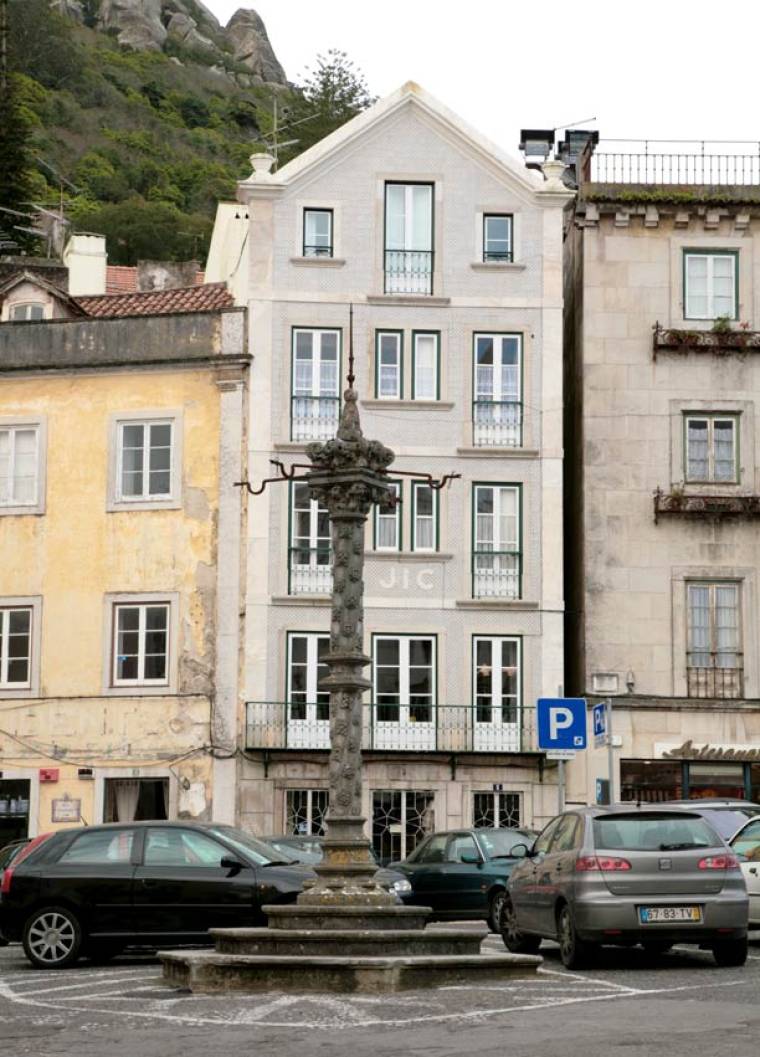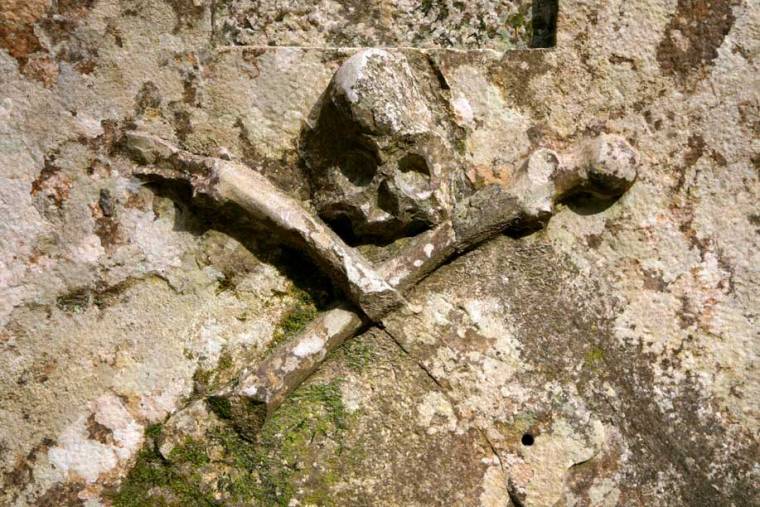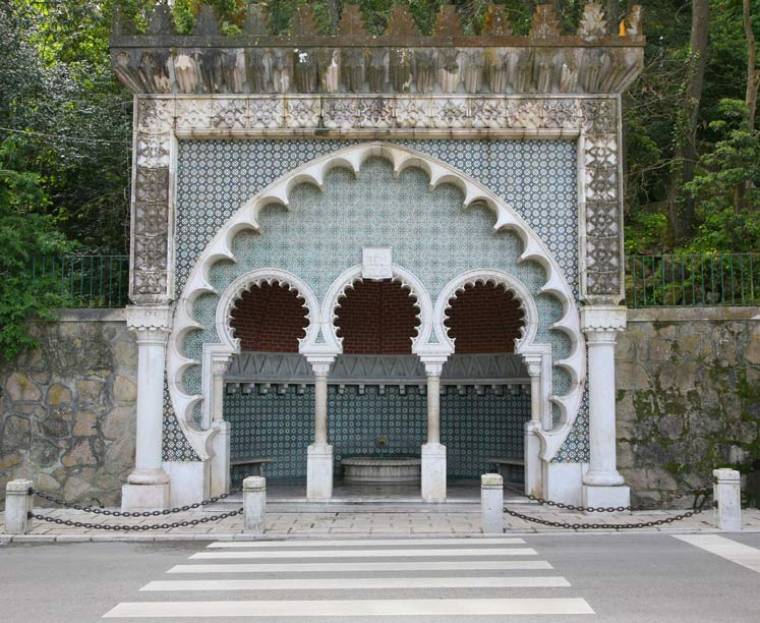No visit to Sintra would be complete without spending some time marvelling at the enchanting Palacio Nacional da Pena. This canary-yellow and terracotta coloured former palace is perched on a rocky outcrop overlooking the town and is an eclectic mix of different styles of architecture which somehow or other manage to blend beautifully together.
In the 16th century the building that stood here was a relatively humble monastery, dedicated to the Order of Saint Jerome and housing only 18 monks. The monastery was all but flattened by the powerful...
This exotic palace was Built in 1858 for English nobleman, Sir Francis Cook. The Moghul-inspired features are not out of place alongside other examples Romanticism in Sintra
Set high on the Serra de Sintra is the towns oldest monument, the Castleo dos Mouros (Moorish Castle). The ruined ramparts of this ancient castle hug the hilltop, spanning two of its highest pinnacles and incorporating the rocky outcrops into its walls. The castle is believed to date back to the 8th or 9th century when large swathes of Portugal were occupied by the Moors. However, the castle fell back under Christian rule when Portugal's first king, Afonso Henriques, reconquered it 1147. Aided by Scandinavian crusaders this was a major victory in the reconquest of Portugal and can't have...
The Moors Castle (Castelo dos Mouros) in Sintra with the Pena Palace in the distance.
Built on the site of an 8th century Moorish castle, the walls you see now are in fact a romanticised reconstruction built by instruction of King Consort Fernando of Saxe Coburg-Gotha in the 19th century.
Related images
The Pena National Palace in Sintra is one of the finest examples of Romanticist architecture to be found anywhere. Construction took place between 1842–1854 under instruction of prince Ferdinand, husband of Queen Maria II.
The site however dates back to the 15th century when it was a monastery.
Now a UNESCO World Heritage Site, the Pena Palace is also listed as one of 'the 7 wonders of Portugal'
Related images
The Monserrate Palace in Sintra is was built for Francis Cook, Viscount Monserrate in 1858.
The Romantic-Orientalist style owes something to Brighton Pavilion. That was built by John Nash, the Monserrate Palace is the work of James Knowles Jr.
Within architectural context of Sintra the palace is perfectly at home.
Related images
Related images
Another of those amazing fairytale houses that are scattered around the forest of the Serra da Sintra
Related images
Related images
The very Moorish looking Fonte Mourisca spring in Sintra.
These springs still provide drinking water and you can often see older people filling bottles from them



